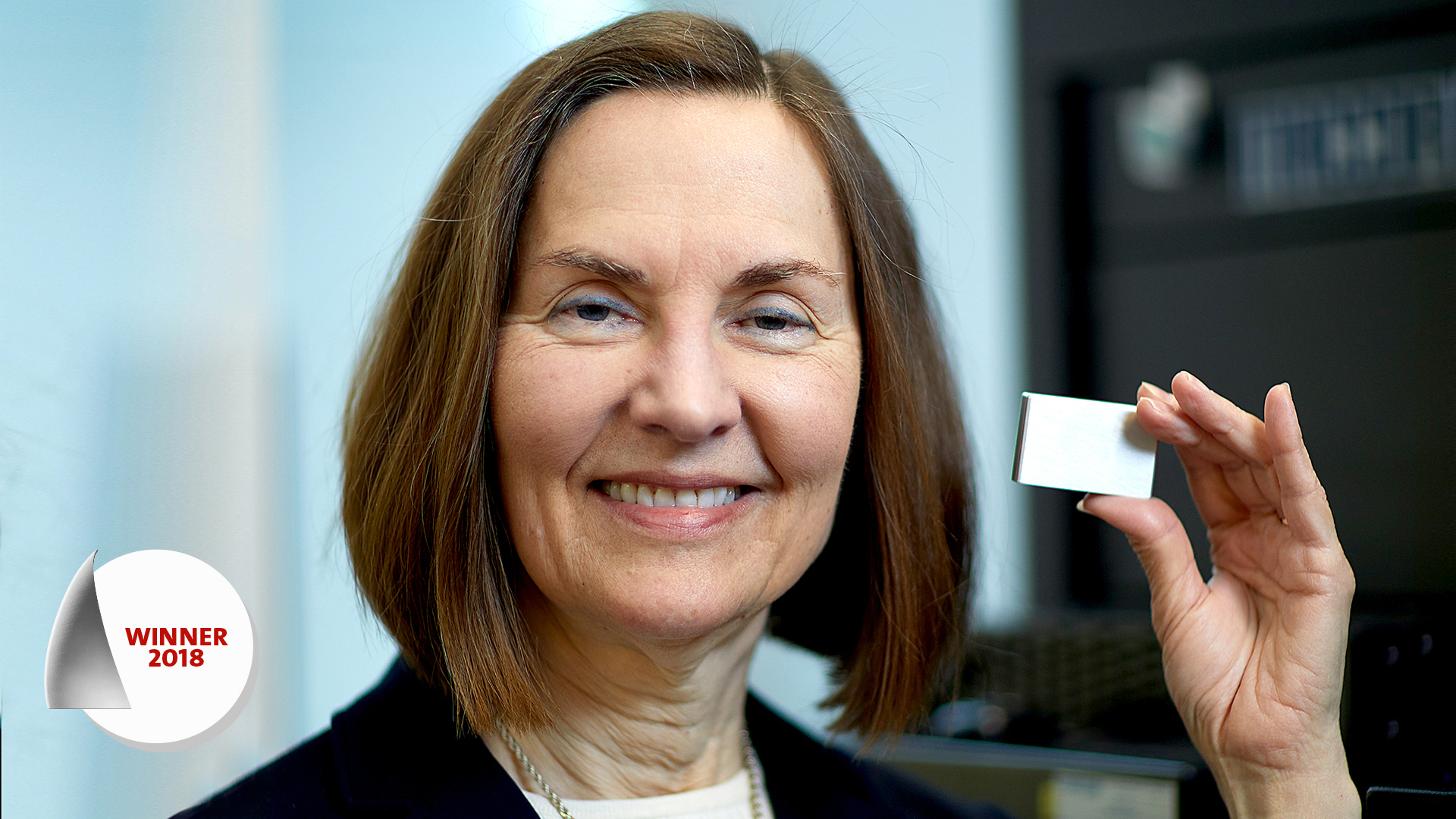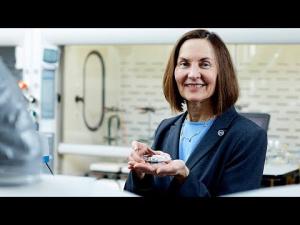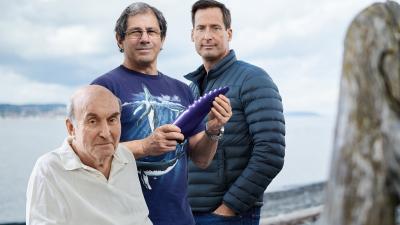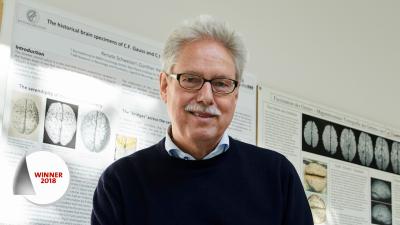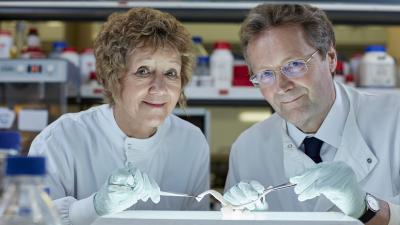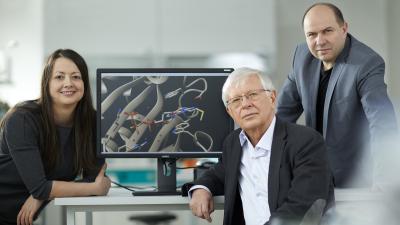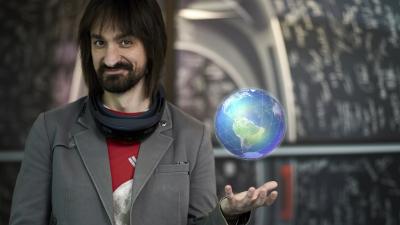Esther Sans Takeuchi
Batteries to reset the heart
Winner of the European Inventor Award 2018
Millions of heart patients with implantable cardiac defibrillators (ICDs) have benefited from the battery technologies pioneered by US materials scientist and chemical engineer Esther Sans Takeuchi. Her lithium/silver vanadium oxide (Li/SVO) batteries paved the way for smaller ICDs with significantly longer battery life, resulting in less surgery for ICD replacements.
Before Takeuchi's invention, ICDs were overly large devices with a battery life of 12 to 18 months at best. The first ICD, implanted in 1980, was placed into the patient's abdominal region due to its size; today, they are fitted underneath the collarbone in the same location as pacemakers.
Because ICD replacement requires major surgery, and takes place every time the batteries are about to expire, the quest for better and smaller devices was primarily a search for better batteries. The main challenge: ICDs "shock" the heart back to normal function and require an electrical current of around two to three amperes to charge their capacitor. This charge is over one million times greater than the electric current powering cardiac pacemakers, typically about only 10 microamperes.
Enter Esther Sans Takeuchi. Perfected in the mid-1980s, her compact Li/SVO batteries, in conjunction with several key patents for the technology, resulted in the first defibrillator equipped with a powerful yet small battery that had significantly greater longevity than its predecessors.
First implanted in a patient in 1987 and commercialised by medical device manufacturer Greatbatch Inc., Takeuchi's patented principle is the most commonly found technology in ICD batteries today and offers battery life of up to five years.
Societal benefit
The inventor's battery technology has powered the widespread adoption of ICDs that started in the late 1980s and continues today. About 10 000 people in the United States receive an ICD implant every month. The cost of the device is between EUR 25 000 and EUR 43 000 per patient.
ICDs are especially effective in regulating cardiac arrests due to ventricular arrhythmias. These complications cause about 7% of all heart attacks, of which ICDs have rendered them one of the more preventable causes. In the US alone, between 200 000 and 400 000 people die suddenly every year as a result of heart rhythm abnormalities. The number of adults living with heart failure rose to 6.5 million between 2011 and 2014, and the numbers are projected to rise by 46% by 2030.
Economic benefit
Takeuchi developed the Li/SVO battery with funding from technology firm Greatbatch Inc. (renamed Integer Holdings Corporation in 2016), where she worked for 22 years. Since its initial implementation in 1987, the Li/SVO system has been improved through materials synthesis, electrolyte modifications, electrolyte additives and cell design. Updates include the Q Series battery, based on two patented innovations developed by Takeuchi and released in 2005.
US-based Integer Holdings Corporation reported sales of EUR 1.2 billion in 2016, with almost 30% generated by cardiac and neuromodulation systems. Sales revenues from such devices have been increasing in recent years, with an 8% increase from 2014 to 2015, and 9% the following year.
According to Transparency Market Research, global sales in the battery market for cardiac rhythm management devices are expected to rise from EUR 338 million in 2015 to EUR 441 million by 2024. The research group identified the Asia-Pacific region as the greatest focus for growth, due to an increase in various health ailments such as hypertension and diabetes, which result in a higher prevalence of cardiovascular diseases.
How it works
Surgically placed just under the skin and connected to the heart, ICDs detect irregular heart rhythms and apply just the right electrical impulse to restore normal ones.
This corrective electrical impulse shocks the heart at 600 to 900 volts - a very high charge for a device that is worn under the skin. Takeuchi's Li/SVO batteries for ICDs manage this feat in a remarkably small package.
Takeuchi's solution relies on stacking alternating layers of anodes and cathodes side by side to increase the surface area of the active material. By employing a compound of silver and vanadium in the cathode - silver for high current, vanadium for long life and high voltage - it was possible to pack more energy into the battery, while creating a chemical indication of when the battery needed to be replaced.
As a result, Li/SVO batteries offer an extended battery life of up to five years, a huge improvement over the typical lifetime of 12 to 18 months of previous batteries. The latest update, 2005's Q Series, moved away from using only silver vanadium oxide and combined it with carbon monofluoride.
The inventor
Takeuchi's academic training provided her with a rich background for her later career. She earned a B.A. in chemistry and history from the University of Pennsylvania in 1975 and a PhD in organic chemistry from Ohio State University in 1981. She then served as a postdoctoral research associate in electrochemistry, first at the University of North Carolina at Chapel Hill from 1982 to 1983, and then at the State University of New York at Buffalo from 1983 to 1984.
Takeuchi found her professional home at Greatbatch Inc. in Clarence, New York, where she worked as Scientist, Chief Scientist and then Director of Research & Development.
Today, she is recognised as one of the world's leading energy storage researchers and is the most successful female American inventor with 150 patents to her name. She worked for more than two decades with technology firm Greatbatch Inc., where she developed numerous innovations, including her ICD battery.
Takeuchi is a member of the US National Academy of Engineering and was awarded the prestigious National Medal of Technology and Innovation in 2010 by President Obama. After 40 years in industry and academia, she continues to work at the forefront of battery technology innovation.
Did you know?
A future that combines humans and machines is already here. The first implantable pacemaker was produced in 1958, followed by the ICD in 1980. Both helped usher in a world where medical devices are located inside the human body to improve life expectancy and well-being.
The European Inventor Award has also highlighted other examples of how implants can change lives. In 2007, a customised pacemaker developed by a Dutch team was a finalist in the "Industry" category. And a team of French scientists, who were Award finalists in 2014, developed an implantable fuel cell to power pacemakers with glucose from the patients' own blood.
Award finalists in 2014's "Lifetime achievement" category included Austrian electrical engineers Erwin and Ingeborg Hochmair, who invented cochlear implants to restore hearing for hundreds of thousands of patients.
Media gallery
Contact
European Inventor Award and Young Inventors Prize queries:
european-inventor@epo.org Subscribe to the European Inventor Award newsletterMedia-related queries:
Contact our Press team#InventorAward #YoungInventors
